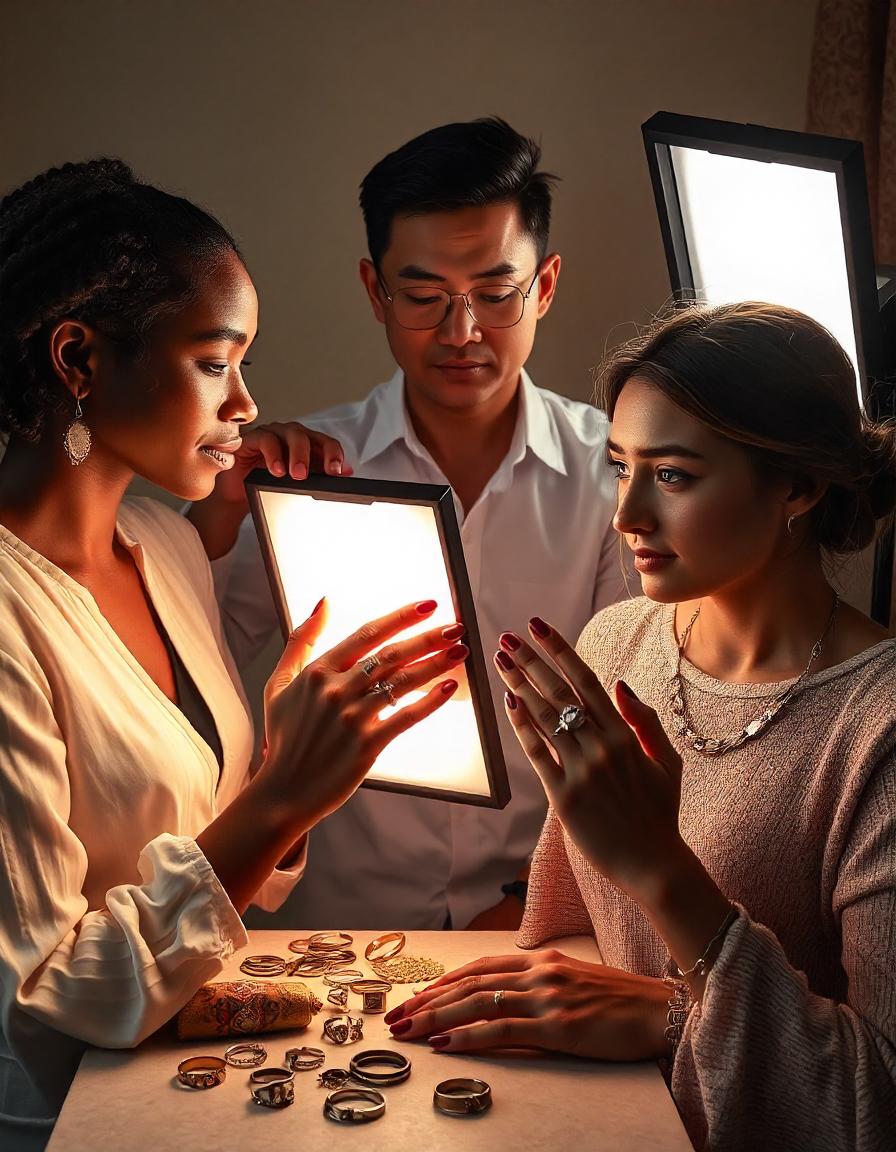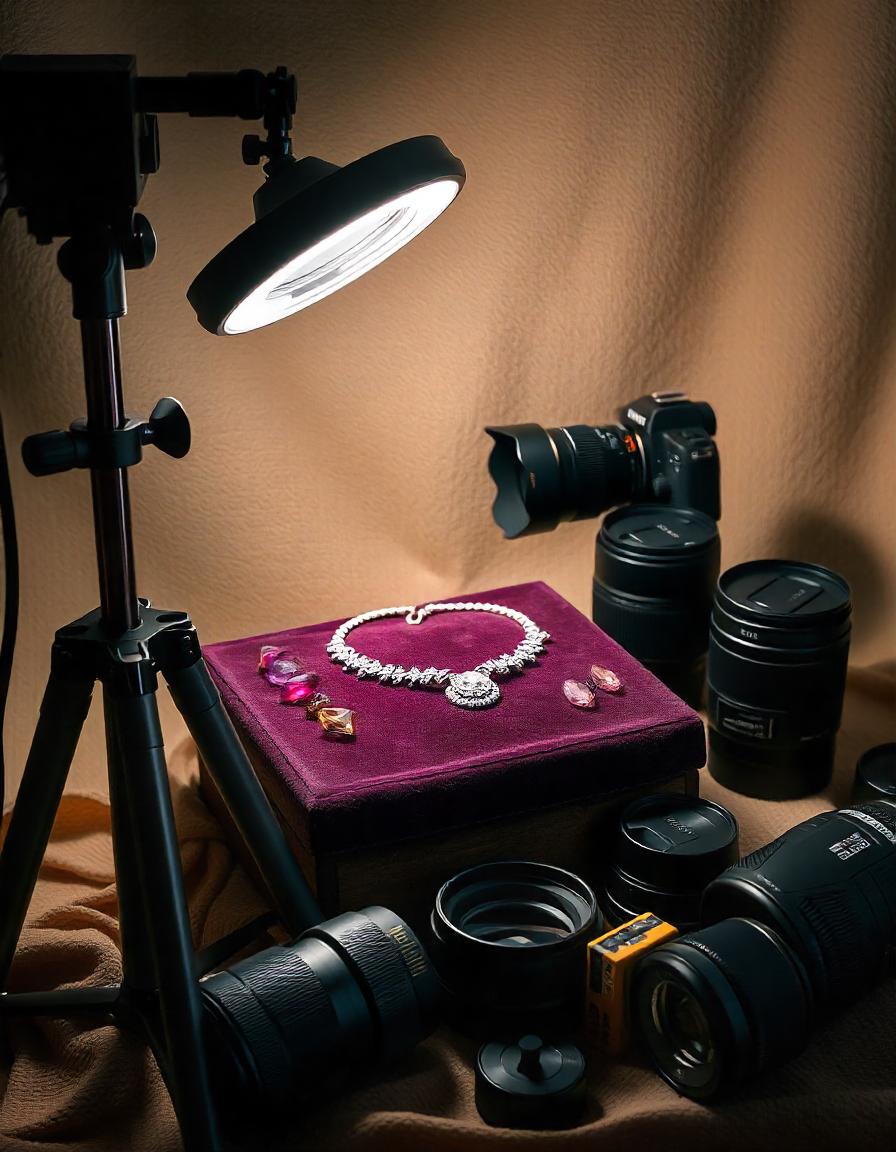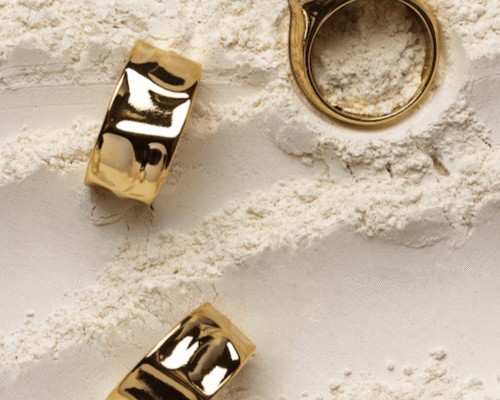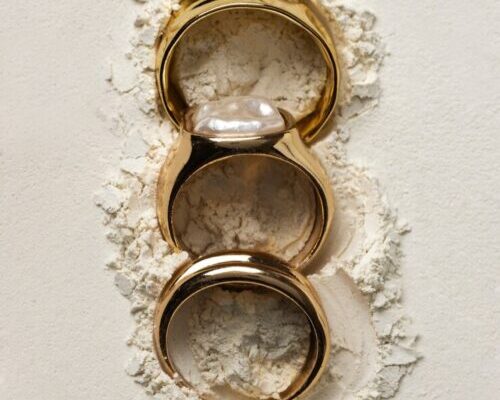Taking beautiful jewelry photos for ecommerce can help you sell more items online. Clear, bright,…

Catch Dazzling Jewelry Photos Like a Pro
Dazzling Jewelry Essential Lighting Tips
Jewelry photography is a special area that needs a good understanding of the techniques for taking great pictures. To start, you need to familiarize yourself with the basics of photography, including aperture, shutter speed, and ISO. Practice using your camera. Try out different settings and learn how to adjust them for the effect you want.
Another crucial aspect of jewelry photography is understanding the importance of composition. Learn to balance the elements in your shot. Use principles like the rule of thirds, leading lines, and symmetry. These will help you create attractive images. Practice shooting from different angles. Try different poses to find the best way to show off your jewelry.
Effective communication with your models or mannequins is also essential. Work with them to find their strengths and weaknesses. Use this knowledge to create poses and angles that show off your jewelry well.
Essential Equipment for Capturing Stunning Images
To produce high-quality jewelry photos, you’ll need the right equipment. A DSLR or mirrorless camera with interchangeable lenses is the best choice, as it offers greater flexibility and control over the shooting process. A good quality lens with a focal length of 50-70mm is best for jewelry photography. It gives a nice view and reduces distortion.
A tripod is important for jewelry photography. It helps you keep your camera steady and avoid shake.
A remote shutter release or camera timer is also useful. It reduces camera movement and lowers the chance of blur.
Lighting equipment is another crucial aspect of jewelry photography. Invest in a good softbox or umbrella lighting kit. These tools give soft, diffused light that is perfect for showing off jewelry. A reflector can also be useful for adding depth and dimension to your images.
Understanding Lighting: The Key to Professional-Looking Photos
Lighting is very important in jewelry photography. It can greatly affect the quality of your images. Soft, diffused light is ideal for showcasing jewelry, as it minimizes harsh shadows and highlights. Use a softbox or umbrella lighting kit to create a soft, even light that wraps around your subject.
Pay attention to the direction of your light source, as it can greatly affect the mood and atmosphere of your image. Side lighting can create a sense of depth and dimension, while backlighting can create a sense of drama and contrast. Experiment with different lighting setups to find the one that works best for your jewelry.
Avoid using direct sunlight or harsh overhead lighting, as it can create unflattering shadows and highlights. Instead, use a diffuser or a scrim to soften the light and create a more even, gentle glow.
Setting the Scene: Tips for Creating a Beautiful Background

The background of your image is as important as the jewelry. It can greatly change the mood and feel of your photo. Choose a background that complements the colors and style of your jewelry, and that provides a clean and simple contrast to the subject.
Use a plain colored wall, a textured fabric, or a natural setting like a park or a garden to create a beautiful background. Avoid using busy or distracting backgrounds that might take attention away from the jewelry.
Experiment with different angles and perspectives to find the one that works best for your background. Shooting from above or at an angle adds depth and dimension. In contrast, shooting straight on gives a sense of simplicity and elegance.
Preparing Your Jewelry for the Perfect Shot
Preparation is key to capturing stunning jewelry photos. Make sure your jewelry is clean and polished, and that it is free of any distractions or imperfections. Use a soft cloth to wipe down the jewelry and remove any fingerprints or smudges.
Pay attention to the setting of any gemstones, and make sure they are securely fastened and won’t come loose during the shoot. Use a jewelry prop or a mannequin to show the jewelry. This will highlight its features and best aspects.
Avoid using jewelry with dangling charms or loose parts, as they can create unwanted movement and blur during the shoot. Instead, choose jewelry with clean lines and simple designs that can be easily posed and photographed.
Common Mistakes to Avoid When Shooting Jewelry Photos
Even with your best efforts, you might still face common mistakes. These mistakes can lower the quality of your jewelry photos. Avoid using too much flash, as it can create harsh shadows and highlights, and instead rely on soft, natural light.
Don’t over expose your models or mannequins, as it can create stiff and unnatural looking images. Instead, work with them to find a relaxed and comfortable pose that showcases the jewelry in a flattering way.
Avoid using busy or distracting backgrounds that might take attention away from the jewelry. Instead, choose a clean and simple background that provides a clean contrast to the subject.
Post-Processing Techniques for Enhanced Image Quality
Post-processing is an important step in jewelry photography. It can greatly improve the quality and look of your images. Use software like Adobe Lightroom or Photoshop to change the brightness, contrast, and saturation. You can also remove any blemishes or distractions.
Use the healing brush or clone stamp tool to fix imperfections in your images. These tools help blend areas that are slightly out of focus.
Use the levels or curves tool to adjust the tone and color balance. This will help create a consistent and attractive look for your images.
Finishing Touches: Adding Text and Branding to Your Jewelry Photos
Adding text and branding to your jewelry photos can help to increase their impact and effectiveness. Use software like Adobe Photoshop to add text or logos to your images. You can also change the font, size, and color to match your brand and style.
Avoid filling the image with too much text or branding. This can take away from the beauty and elegance of the jewelry. Instead, use a simple and understated approach that adds a touch of professionalism and sophistication to the image.
Use the text or logo to share more details about the jewelry. Include information like the materials, the designer, or the inspiration for the piece. This helps build trust and authenticity. It can also improve the chances of selling or promoting the jewelry.
Conclusion
Capturing stunning jewelry photos requires a combination of technical skills, creative vision, and attention to detail. By learning the basics of photography, understanding lighting, and preparing your jewelry, you can take great pictures. These images will show your pieces in the best light.
Avoid common mistakes and use editing techniques to improve your photos. With practice and patience, you can create beautiful jewelry photos that help sell your pieces.
Read Next: Elevate Fashion Photography: Master Background Editing Skills



